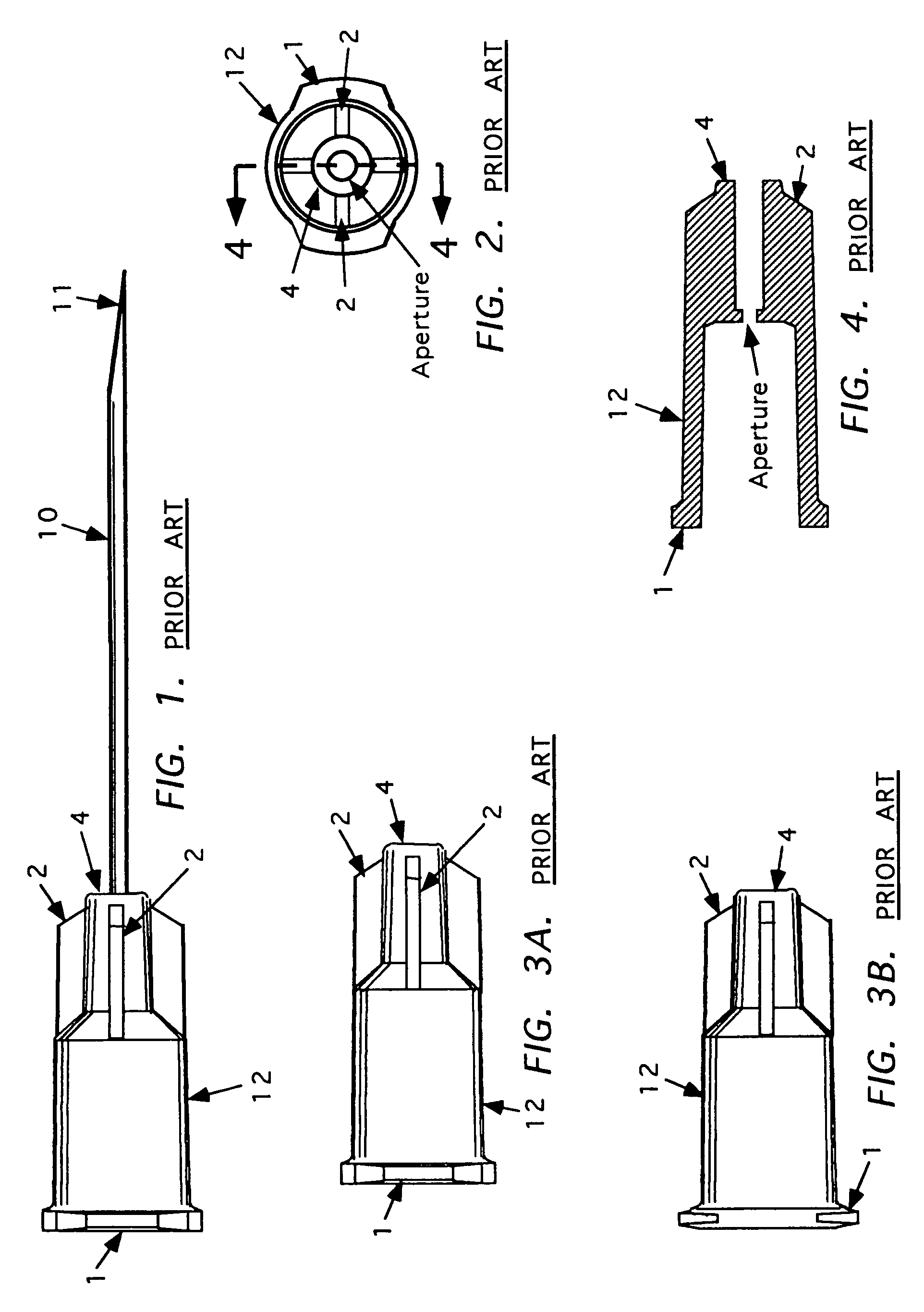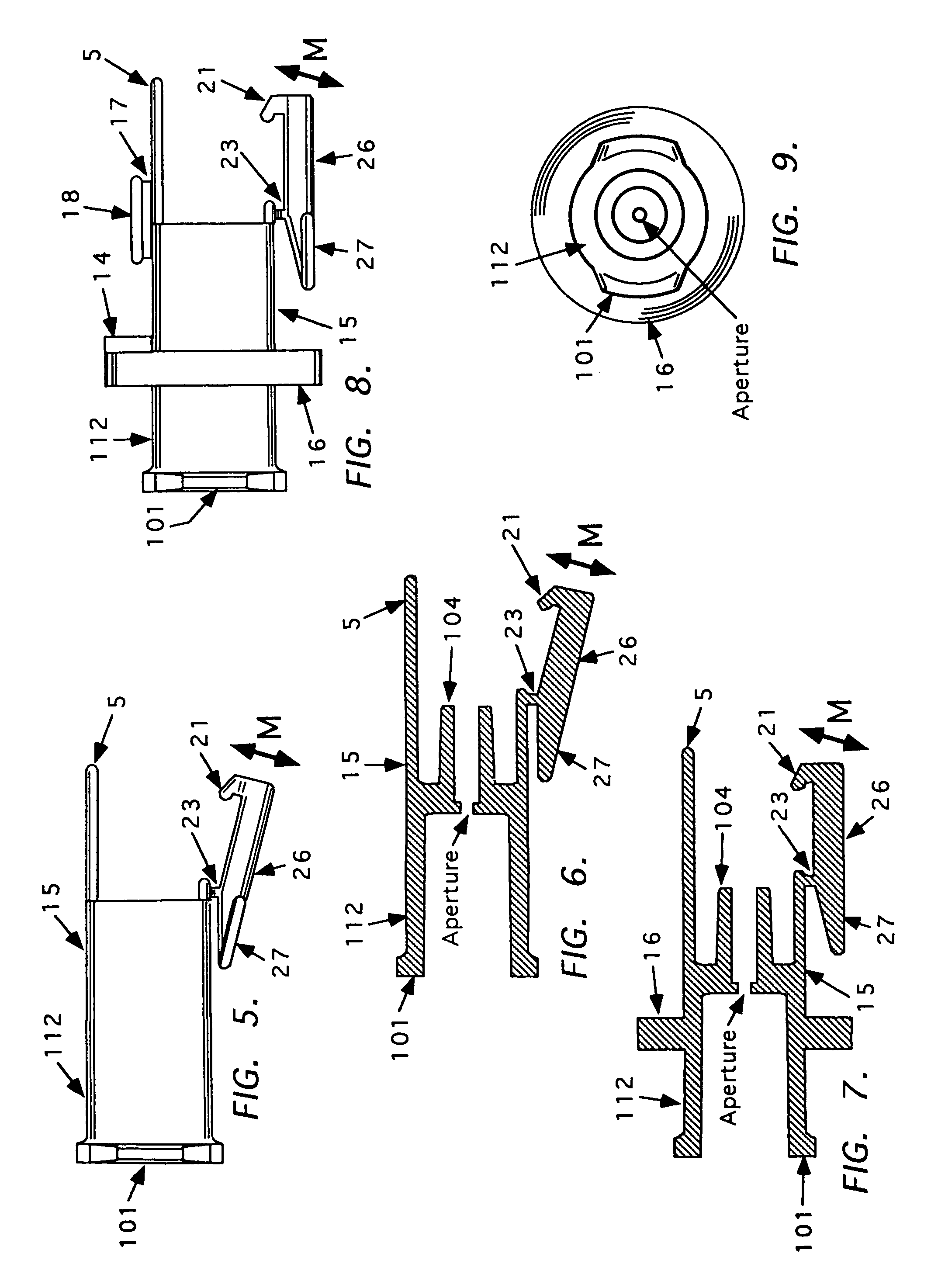Needle tip guard for percutaneous entry needles
a technology of percutaneous entry and needles, applied in the field of needle tip guards for percutaneous entry needles, can solve the problems of increasing the odds of disease transmission from patient to healthcare worker, the presence of any of these pathogens in patients poses a risk to healthcare workers, and the unprecedented occupational hazards of healthcare workers
- Summary
- Abstract
- Description
- Claims
- Application Information
AI Technical Summary
Benefits of technology
Problems solved by technology
Method used
Image
Examples
Embodiment Construction
[0145]A needle tip protective device is described. In this regard, to the extent applicable, this application is related to and claims the benefit of filing dates of the following U.S. Non-Provisional patent applications: (1) Ser. No. 60 / 012,343, entitled PROTECTED HYPODERMIC NEEDLE WITH AUTOMATIC AND MANUAL COVERING MEANS, filed Feb. 27, 1996; (2) Ser. No. 60 / 025,273, entitled HYPODERMIC DEVICES WITH SAFETY FEATURES, filed Sep. 12, 1996; and (3) Ser. No. 60 / 031,399, entitled HYPODERMIC DEVICES WITH IMPROVED SAFETY FEATURES, filed Nov. 19, 1996; (4) U.S. patent application Ser. No. 08 / 807,328 entitled NEEDLE TIP GUARD FOR HYPODERMIC NEEDLES, now issued as U.S. Pat. No. 5,879,337; (5) U.S. patent application Ser. No. 09 / 172,185 entitled INTRAVENOUS CATHETER ASSEMBLY, now issued as U.S. Pat. No. 6,001,080, filed on Oct. 13, 1998; and U.S. patent application Ser. No. 09 / 144,398 entitled NEEDLE TIP GUARD FOR HYPODERMIC NEEDLES, filed on Aug. 31, 1998, the teachings of which are expressl...
PUM
| Property | Measurement | Unit |
|---|---|---|
| disease transmission | aaaaa | aaaaa |
| time | aaaaa | aaaaa |
| lengths | aaaaa | aaaaa |
Abstract
Description
Claims
Application Information
 Login to View More
Login to View More - R&D
- Intellectual Property
- Life Sciences
- Materials
- Tech Scout
- Unparalleled Data Quality
- Higher Quality Content
- 60% Fewer Hallucinations
Browse by: Latest US Patents, China's latest patents, Technical Efficacy Thesaurus, Application Domain, Technology Topic, Popular Technical Reports.
© 2025 PatSnap. All rights reserved.Legal|Privacy policy|Modern Slavery Act Transparency Statement|Sitemap|About US| Contact US: help@patsnap.com



